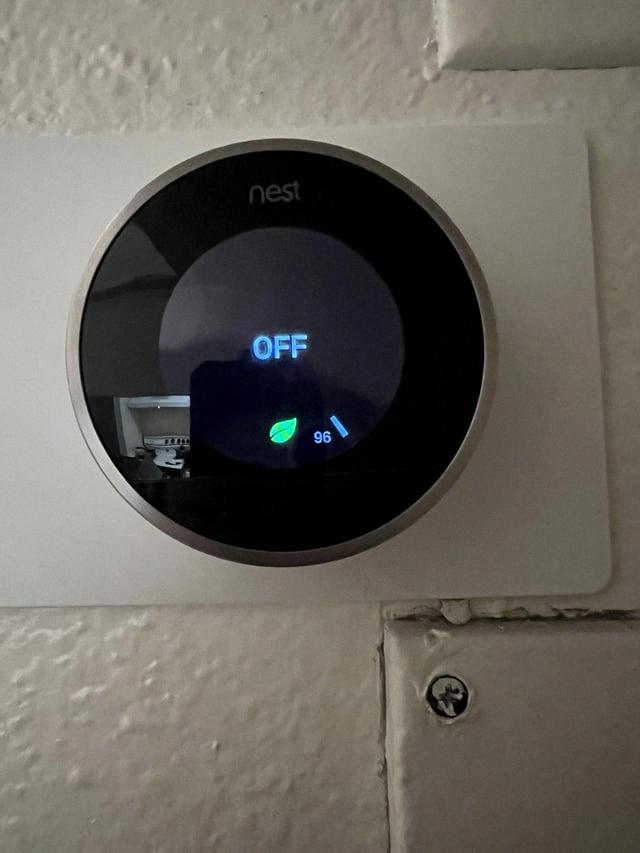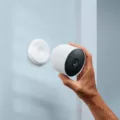One common issue that users may experience with their Nest thermostat is incorrect temperature readings. This can be frustrating, as it can lead to discomfort in your home and potentially higher energy bills. However, there are a few factors to consider and steps you can take to troubleshoot and resolve this problem.
One factor that can affect the temperature readings is the placement of the thermostat sensor. The location of the sensor can greatly impact the temperature it reports back to the thermostat. For example, if the sensor is placed near a window that gets direct sunlight, it may result in inaccurate temperature readings. Similarly, if the sensor is placed near a drafty area, it may register lower temperatures than the rest of the house.
To address this issue, it is important to check the sensor placement. Ensure that it is not exposed to extreme temperatures or direct sunlight. Move it to a more central location in your home where it can provide a more accurate reading of the overall temperature.
Another possible cause of incorrect temperature readings is a faulty wiring connection. If the wiring is loose or damaged, it can disrupt the communication between the thermostat and the heating/cooling system, leading to inaccurate temperature readings. In such cases, it may be necessary to check the wiring connections and ensure they are secure and undamaged.
Additionally, a clogged air filter can also impact the temperature readings. A dirty air filter restricts airflow, making it harder for the heating or cooling system to reach the desired temperature. This can result in the thermostat displaying incorrect readings. Regularly check and replace the air filter to ensure proper airflow and accurate temperature readings.
Lastly, connectivity issues with the WiFi can also affect the functionality of the Nest thermostat. If the thermostat is unable to connect to the WiFi network, it may not be able to access the latest software updates and calibration data, leading to inaccurate temperature readings. To troubleshoot this, try reconnecting the thermostat to the WiFi network or contacting Nest support for assistance.
If you are experiencing incorrect temperature readings with your Nest thermostat, it is important to check the sensor placement, wiring connections, air filter, and WiFi connectivity. By addressing these potential issues, you can ensure that your thermostat provides accurate temperature readings and improves the overall comfort of your home.
Why is Your Nest Thermostat Not Reading Correct Temperature?
There could be several reasons why your Nest thermostat is not reading the correct temperature. One of the possible reasons is the placement of the sensor. Here are some factors to consider:
1. Sensor location: The placement of the sensor plays a crucial role in accurate temperature readings. If the sensor is placed in a location that is exposed to direct sunlight, near a drafty area, or close to a heat source, it may give inaccurate readings. Make sure the sensor is not obstructed by any objects that could affect its ability to sense the temperature correctly.
2. Heat sources: Placing the thermostat near heat sources such as lamps, electronics, or appliances can cause it to register a higher temperature than the rest of the room. This can lead to your HVAC system working harder than necessary, resulting in incorrect temperature readings.
3. Drafty areas: If the sensor is located near a drafty area like a window or door, it may detect a lower temperature than the rest of the room. This can lead to your thermostat overworking your HVAC system, causing it to heat or cool your home more than necessary.
4. Calibration: Sometimes, the thermostat may need calibration to ensure accurate temperature readings. You can do this by comparing the temperature readings on your thermostat with a separate thermometer placed in the same location. If there is a significant difference, you can adjust the thermostat’s calibration settings accordingly.
5. Wi-Fi interference: In some cases, Wi-Fi interference can affect the thermostat’s ability to communicate with the sensor accurately. This can result in incorrect temperature readings. If you suspect Wi-Fi interference, try relocating your router or thermostat to minimize the impact.
It’s important to note that if you have recently installed or moved your thermostat, it may take a few days for it to adjust to its new environment and provide accurate readings. If the issue persists, you may want to contact Nest customer support for further assistance or consider consulting a professional HVAC technician to ensure proper installation and functioning of your thermostat.

How Do You Fix the Temperature on Your Nest?
To fix the temperature on your Nest thermostat, follow these steps:
1. On the home screen of the Nest app, locate and select your thermostat.
2. Make sure your thermostat is set to either Heat, Cool, or Heat • Cool mode. If not, tap on the “Mode” button to change the temperature mode.
3. To increase or decrease the temperature, tap and drag the dial on the screen in a clockwise or counterclockwise direction, respectively.
4. If you want to be more precise, you can tap on the temperature number itself and use the keypad to enter the desired temperature.
5. Once you have adjusted the temperature to your preference, the Nest thermostat will start working to reach and maintain the set temperature.
If you are looking to adjust the temperature remotely, you can also use the Nest app on your smartphone or tablet to make changes from anywhere. Simply open the app, select your thermostat, and follow the same steps mentioned above to fix the temperature.
Remember, the Nest thermostat is designed to learn your preferences over time and create a personalized schedule. It also has features like Eco Mode to help save energy when you are away. Taking advantage of these features can further enhance your thermostat’s performance and energy efficiency.
What is a Common Problem With Nest Thermostats?
A common problem with Nest thermostats is the inability to connect to the WiFi. This can be caused by various issues such as:
1. Incorrect WiFi password: Double-check the password you entered during the setup process to ensure it is correct. Remember that WiFi passwords are case-sensitive.
2. Weak WiFi signal: If your Nest thermostat is located far away from your WiFi router or there are physical obstructions in between, it may have trouble connecting to the WiFi network. Try moving the thermostat closer to the router or consider using a WiFi range extender.
3. WiFi network compatibility: Nest thermostats support 2.4GHz WiFi networks. If your WiFi network is configured to use only 5GHz, the thermostat won’t be able to connect. Check your router settings and make sure it is broadcasting a 2.4GHz network.
4. Network congestion: If you have multiple devices connected to your WiFi network simultaneously, it may cause congestion and affect the thermostat’s ability to connect. Try disconnecting some devices or optimizing your network settings to prioritize the thermostat’s connection.
5. Firmware or software updates: Occasionally, Nest releases firmware or software updates that may cause temporary connectivity issues. Make sure your thermostat is up to date with the latest updates by checking the Nest app or website.
6. Router settings: Some router settings, such as MAC address filtering or firewall settings, can block the Nest thermostat from connecting to the WiFi network. Check your router’s settings and make sure it allows the thermostat’s MAC address and doesn’t block any necessary ports.
If you have tried all these troubleshooting steps and the Nest thermostat still cannot connect to the WiFi, it is recommended to contact Nest support for further assistance. They can provide more specific guidance based on your setup and help resolve the issue.
Conclusion
If you are experiencing issues with your Nest thermostat reporting the wrong temperature, it is important to check the placement of your sensor. The location of the sensor can greatly impact the accuracy of the temperature readings. Placing the sensor on a window that can get very hot or cold, for example, can lead to overheating or overcooling in your home.
To troubleshoot the issue, start by checking the sensor placement and ensure it is not in direct contact with any heat or cold sources. Additionally, make sure there are no obstructions blocking the sensor, such as curtains or furniture. Adjusting the placement of the sensor may help to improve the accuracy of the temperature readings.
If you have tried adjusting the sensor placement and are still experiencing incorrect temperature readings, it is recommended to contact Nest support for further assistance. They can provide additional troubleshooting steps or guide you through any necessary repairs or replacements.
Remember that common Nest thermostat problems can range from faulty wiring to a clogged air filter, so it is important to rule out any other potential issues before concluding that it is solely a sensor placement problem. By following these steps and seeking support when needed, you can ensure that your Nest thermostat is accurately reporting the temperature in your home.













